The Powerhouse of Biodiversity: Exploring the Amazon Rainforest
The Amazon Rainforest is often referred to as the "lungs of the Earth," and for good reason. This expansive and vibrant ecosystem is not just a collection of trees and wildlife; it is a complex web of life that supports millions of species, including humans. Covering over 5.5 million square kilometers across several countries, the Amazon is a treasure trove of biodiversity that plays a crucial role in regulating our planet's climate. But what makes this rainforest so special? And why should we care about its preservation? In this article, we will delve into the immense biodiversity of the Amazon Rainforest, highlighting its ecological significance, unique species, cultural importance, and the pressing threats it faces in the modern world.
The Amazon Rainforest serves as a critical component of the Earth's ecosystem. Acting as a massive carbon sink, it absorbs carbon dioxide from the atmosphere, helping to mitigate climate change. The rainforest's diverse ecosystems are vital for maintaining biodiversity and ecological balance, supporting countless species of flora and fauna. Furthermore, the Amazon influences weather patterns not just locally, but globally. It generates rainfall through a process known as transpiration, where trees release water vapor into the atmosphere. This phenomenon is essential for maintaining the hydrological cycle, which affects agricultural productivity and water availability far beyond the rainforest's borders.
When we think of the Amazon, we often picture lush greenery and exotic wildlife. Indeed, the rainforest is home to millions of species, many of which are yet to be discovered. The sheer variety of plants and animals is staggering, and it is this diversity that makes the Amazon one of the most biodiverse regions on the planet. From towering trees that can reach heights of over 60 meters to vibrant orchids and carnivorous plants, the flora of the Amazon is as fascinating as it is essential. Similarly, the fauna includes everything from the majestic jaguar to the elusive pink river dolphin, each playing a unique role in their respective ecosystems.
One of the most compelling reasons to protect the Amazon is the presence of endemic species—those that exist nowhere else on Earth. These organisms are often highly specialized, adapted to the unique conditions of the rainforest. Preserving these species is crucial not only for maintaining biodiversity but also for ensuring the resilience of ecosystems. The loss of even a single endemic species can have cascading effects on the entire ecosystem, leading to further losses and imbalances. Therefore, conservation efforts must prioritize the protection of these unique organisms to maintain global biodiversity.
The Amazon is home to a plethora of iconic mammals, each with its own ecological role. For instance, the jaguar is not just a beautiful predator; it helps control the populations of herbivores, maintaining the balance of the ecosystem. Sloths, with their slow-moving lifestyle, contribute to the nutrient cycle by aiding in the decomposition of leaves. River dolphins, on the other hand, are indicators of the health of aquatic ecosystems. However, these magnificent creatures face significant threats from habitat loss, poaching, and climate change, making their conservation imperative.
The plant life in the Amazon is not only diverse but also incredibly important for both local and global health. Many of these plants possess medicinal properties, with some being used in traditional medicine for centuries. For example, the bark of the cinchona tree has been used to create quinine, a treatment for malaria. Additionally, the rainforest's plant life plays a vital role in carbon sequestration and oxygen production, making it essential for combating climate change. Protecting these plants means safeguarding not just the local ecosystem but also the future of global health.
Despite its vastness and richness, the Amazon Rainforest faces numerous threats that jeopardize its biodiversity. Deforestation, driven largely by agricultural expansion and logging, is one of the most pressing issues. Climate change further exacerbates these challenges, altering habitats and threatening species that cannot adapt quickly enough. Additionally, illegal wildlife trade poses a significant risk to many species, pushing them closer to extinction. Addressing these threats requires urgent action and a commitment to sustainable practices that prioritize the health of the rainforest.
Beyond its ecological significance, the Amazon Rainforest is also a cultural treasure. Indigenous communities have lived in harmony with the rainforest for centuries, relying on its resources for their livelihoods, traditions, and spiritual practices. Their deep understanding of the ecosystem is invaluable in conservation efforts, as they possess knowledge that has been passed down through generations. Protecting the Amazon means respecting and preserving the cultures that have thrived alongside it.
Indigenous peoples are often the best stewards of the land, having developed sustainable practices that ensure the health of the rainforest. Their knowledge encompasses everything from medicinal plants to animal behavior, providing insights that can aid conservation efforts. By involving indigenous communities in decision-making processes, we can create more effective strategies for preserving the Amazon's biodiversity. Their voices must be heard, and their rights respected, as they are not just inhabitants of the rainforest, but its guardians.
While modern development can bring economic opportunities, it also poses significant risks to the Amazon's cultural and ecological integrity. Infrastructure projects, such as roads and dams, can fragment habitats and disrupt the delicate balance of the ecosystem. Finding a balance between development and conservation is crucial to ensure that the Amazon continues to thrive for generations to come. Sustainable development practices must be prioritized to protect this invaluable resource.
Fortunately, various organizations and governments are working tirelessly to protect the Amazon's biodiversity. Initiatives such as reforestation projects, wildlife reserves, and sustainable tourism are gaining traction. Global cooperation is essential in these efforts, as the Amazon is a shared resource that transcends national borders. By coming together, we can create a united front against the threats facing this vital ecosystem and ensure its preservation for future generations.
- What is the Amazon Rainforest known for? The Amazon is known for its incredible biodiversity, being home to millions of species, including many that are endemic to the region.
- Why is the Amazon important for climate regulation? The Amazon acts as a carbon sink, absorbing carbon dioxide and influencing global weather patterns.
- What are the main threats to the Amazon Rainforest? Major threats include deforestation, climate change, and illegal wildlife trade.
- How do indigenous peoples contribute to conservation? Indigenous communities possess extensive knowledge of the ecosystem and have sustainable practices that help protect the rainforest.
- What can I do to help protect the Amazon? Supporting sustainable products, advocating for conservation policies, and raising awareness can all contribute to protecting this vital ecosystem.
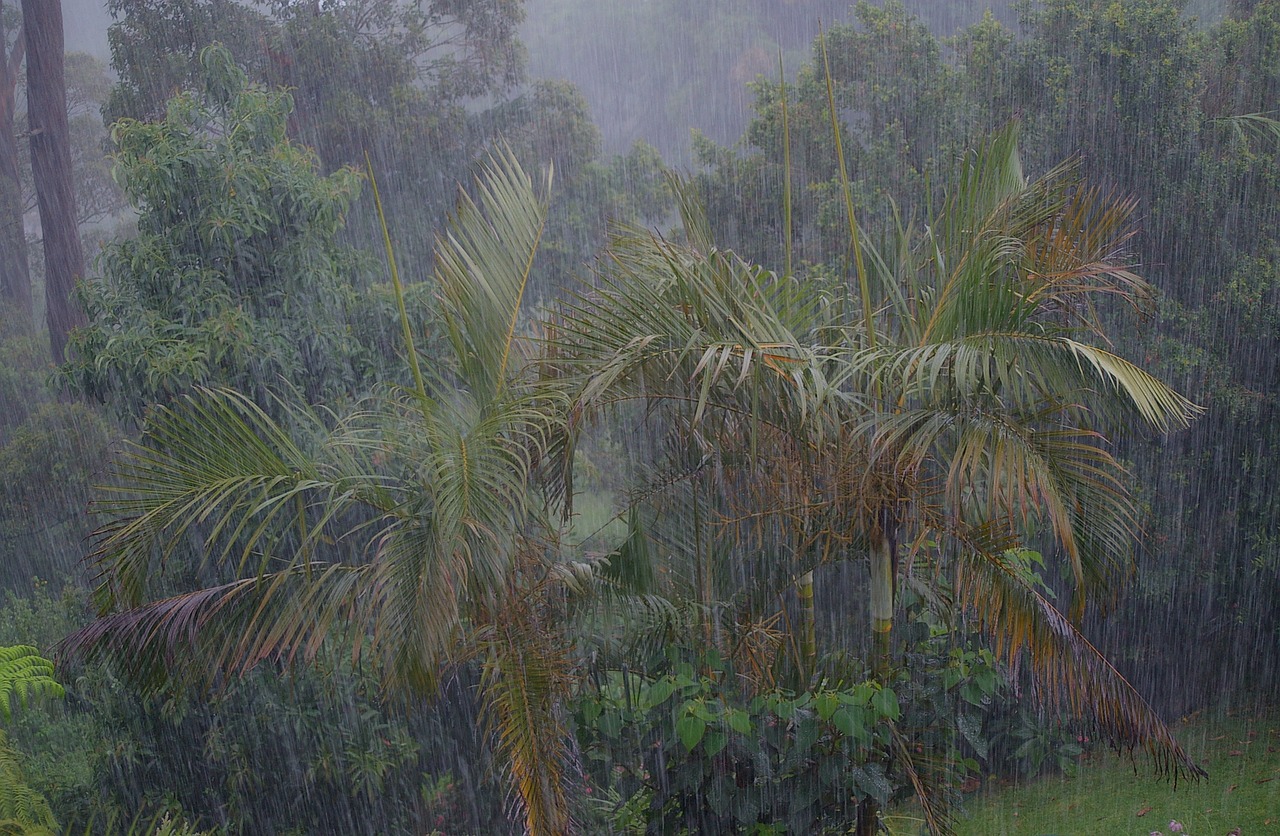
The Ecological Significance of the Amazon
The Amazon Rainforest is often referred to as the "lungs of the Earth," and for good reason. This vast expanse of greenery plays a crucial role in regulating the planet's climate, acting as a significant carbon sink. By absorbing carbon dioxide from the atmosphere, the Amazon helps mitigate the effects of climate change, making it an indispensable part of our global ecosystem. Imagine the Amazon as a giant sponge, soaking up excess carbon and releasing oxygen, which is essential for all life on Earth. Without this natural powerhouse, our climate would be dramatically different, leading to more extreme weather patterns and ecological instability.
Moreover, the Amazon influences weather patterns not just locally, but globally. It generates rainfall through a process known as transpiration, where trees release water vapor into the atmosphere. This vapor eventually condenses and falls back as rain, which is crucial for maintaining the hydrological cycle. The rainforest's ability to produce moisture affects agricultural regions as far away as the United States and Europe. In essence, the Amazon is like a giant air conditioner, cooling the planet and maintaining a balance that benefits countless ecosystems.
But the ecological significance of the Amazon doesn't stop there. It is home to an astonishing array of biodiversity, housing approximately 10% of all known species on Earth. This includes a wide variety of flora and fauna, many of which are still undiscovered. The intricate web of life within the rainforest contributes to ecological balance, with each species playing a unique role. For instance, the diverse plant life provides food and habitat for countless animals, while also producing oxygen and maintaining soil health. The loss of any single species could have a cascading effect on the entire ecosystem, much like removing a piece from a complex puzzle.
To illustrate the importance of the Amazon's biodiversity, consider the following table that highlights some of the key ecological functions provided by various species:
| Species | Ecological Function |
|---|---|
| Jaguars | Top predator, maintaining the balance of herbivore populations |
| Brazil Nut Trees | Provide food for various species and are vital for local economies |
| Orchids | Pollinators attract insects, supporting the reproduction of many plants |
| River Dolphins | Indicator species for river health and biodiversity |
In addition to these ecological functions, the Amazon also plays a crucial role in indigenous cultures, as it provides resources and sustenance that have been utilized for centuries. The intricate relationships between the flora and fauna of the Amazon and the indigenous peoples are a testament to the rainforest's importance, not only for biodiversity but also for cultural heritage. Protecting the Amazon is not just about saving trees and animals; it's about preserving a way of life that has thrived in harmony with nature for generations.
In conclusion, the ecological significance of the Amazon Rainforest extends far beyond its borders. It is a vital component of our planet's health, influencing climate, weather patterns, and biodiversity. As we face unprecedented environmental challenges, recognizing and protecting the Amazon's ecological role is more critical than ever. After all, the fate of the Amazon is intricately linked to our own survival.
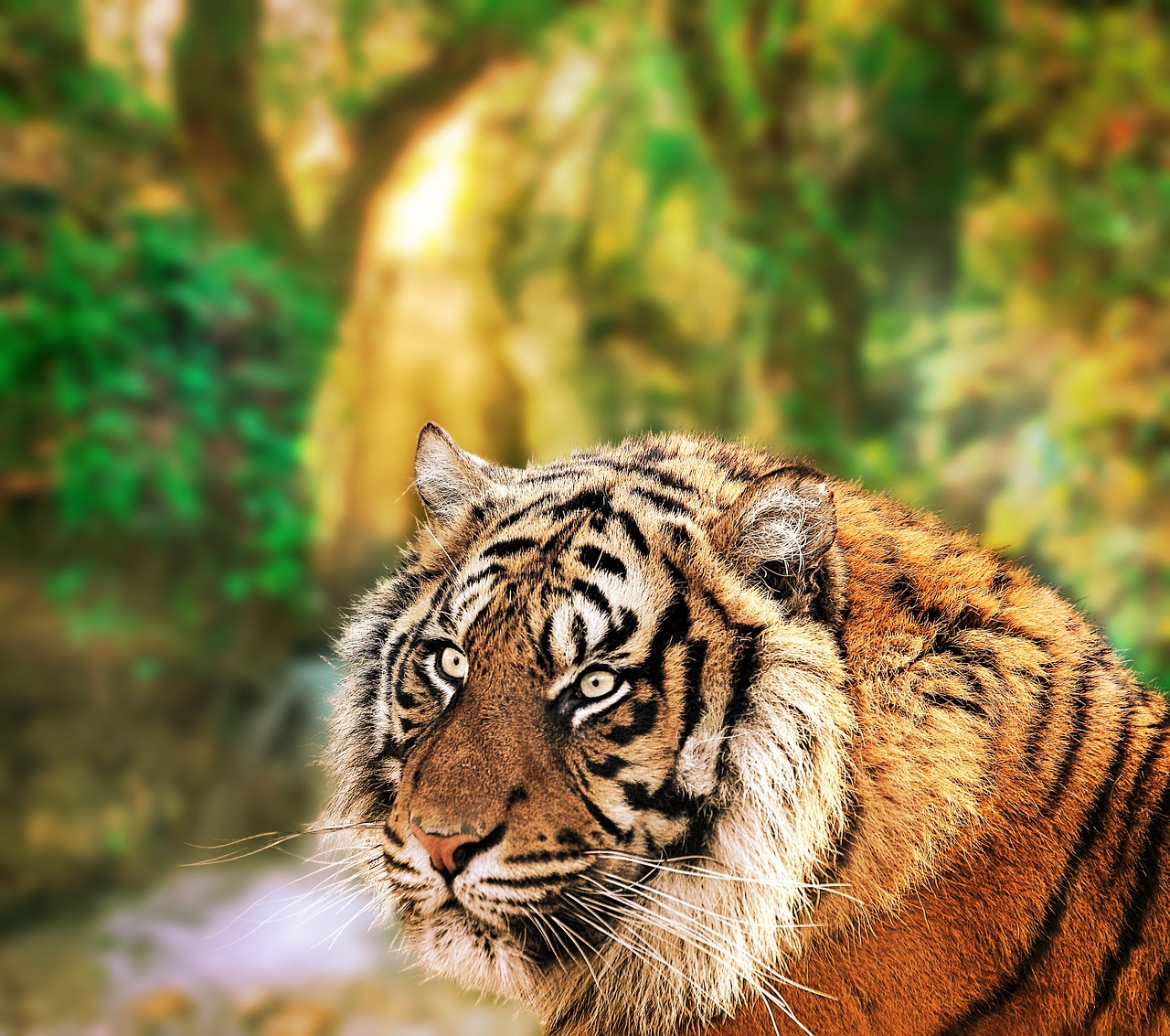
Diverse Flora and Fauna
The Amazon Rainforest is often referred to as the "lungs of the Earth," and for good reason. This expansive ecosystem is teeming with life, boasting an astonishing variety of flora and fauna that is unmatched anywhere else on the planet. Imagine walking through a vibrant, green world where every step reveals new wonders—from towering trees that seem to touch the sky to the intricate dance of colorful birds flitting through the canopy. The Amazon is home to an estimated 390 billion individual trees belonging to around 16,000 different species, making it a true botanical paradise.
But it's not just the trees that make the Amazon special; the rainforest is a sanctuary for millions of species of animals, many of which are found nowhere else. The sheer diversity here is mind-boggling. For instance, did you know that the Amazon is home to over 2.5 million insect species? That's right! Insects alone account for a significant portion of the biodiversity, playing crucial roles in pollination, decomposition, and serving as a food source for countless other organisms.
Among the most fascinating aspects of the Amazon's biodiversity are its endemic species. These are species that are unique to the region, having evolved over millions of years in isolation. The importance of preserving these organisms cannot be overstated, as they contribute to the overall health of the ecosystem and provide invaluable resources for medicine and science. Some examples of these endemic species include:
- Amazonian Manatee: A gentle giant that thrives in the river systems, this elusive creature is crucial for maintaining aquatic ecosystems.
- Pink River Dolphin: Known for its distinctive color, this intelligent mammal plays a vital role in the health of river ecosystems.
- Jaguar: As the apex predator, the jaguar helps maintain the balance of populations within the rainforest.
As we explore the flora, we cannot overlook the unique plant life that thrives here. The Amazon is home to a staggering variety of plants, many of which possess medicinal properties that have been utilized by indigenous peoples for centuries. For example, the cinchona tree, which is native to the region, is the source of quinine, a compound used to treat malaria. This is just one example of how the Amazon's biodiversity contributes not only to local health but also to global medicine.
Moreover, the rainforest's vegetation plays a critical role in the global climate system. Through the process of photosynthesis, these plants absorb carbon dioxide and release oxygen, helping to regulate the atmosphere. The Amazon's ability to act as a carbon sink is vital in combating climate change, making its preservation essential for the planet's health.
In summary, the Amazon Rainforest is a treasure trove of biodiversity that encompasses an incredible range of species and ecosystems. From its towering trees to its diverse animal life, every element of this ecosystem is interconnected, contributing to the overall health of our planet. However, with such diversity comes responsibility. As we delve deeper into the wonders of the Amazon, we must also confront the challenges it faces and work towards ensuring its preservation for generations to come.
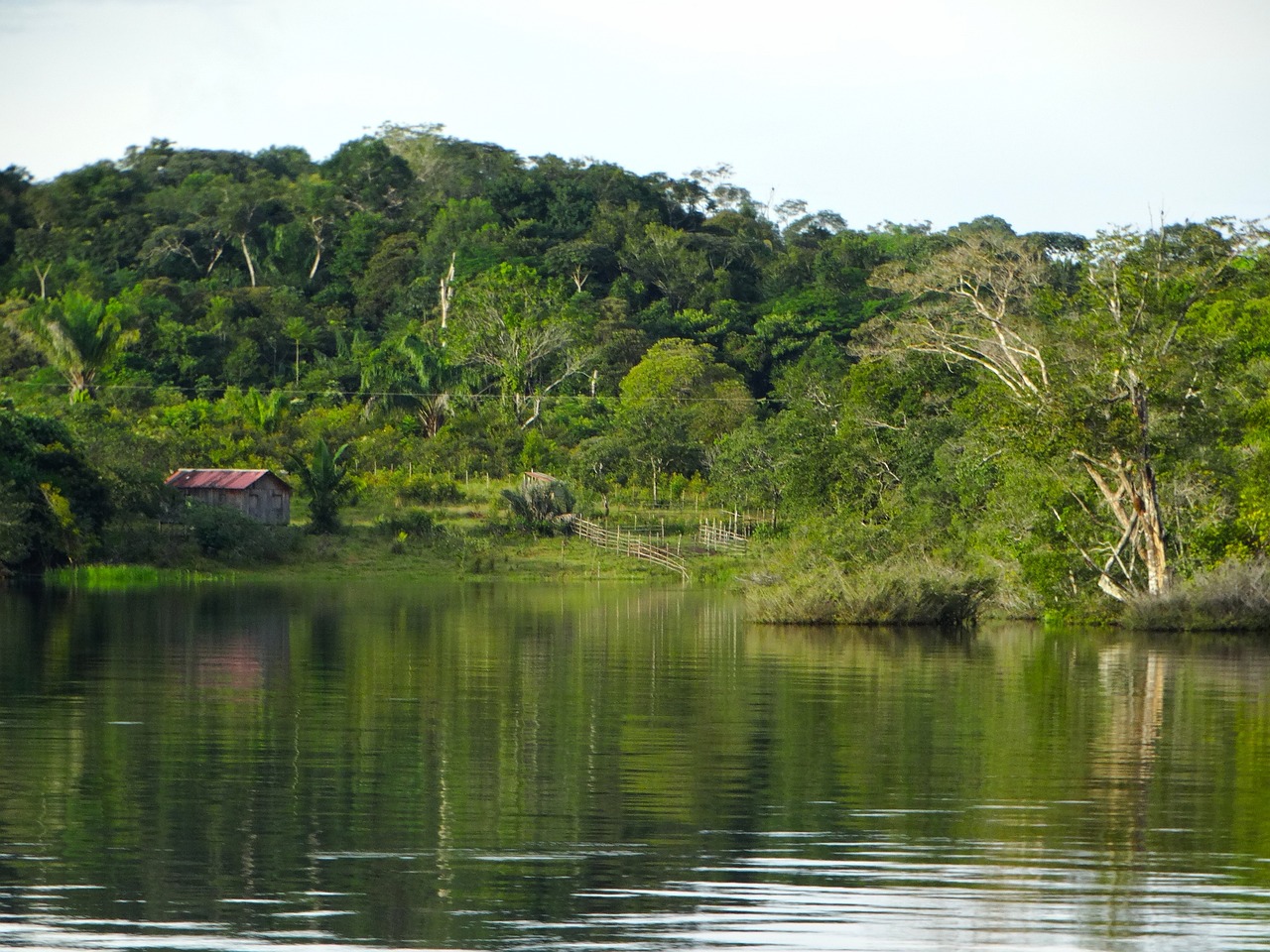
Endemic Species of the Amazon
The Amazon Rainforest is a treasure trove of biodiversity, cradling a myriad of species that are found nowhere else on the planet. These endemic species are not just unique; they are vital threads in the intricate tapestry of the rainforest's ecosystem. Imagine walking through a dense thicket, where the air is thick with humidity, and the sounds of wildlife surround you. Each rustle in the underbrush could be a glimpse of a creature that has adapted to this environment over millennia, evolving in isolation from the rest of the world.
Among the most remarkable endemic species are the Amazonian manatee, the pink river dolphin, and various species of frogs that display vibrant colors and unique mating calls. For instance, the Amazonian manatee, a gentle giant of the waterways, thrives in the river systems of the rainforest, playing a crucial role in maintaining the health of aquatic ecosystems. Meanwhile, the pink river dolphin, with its playful demeanor, is not only a symbol of the Amazon but also a key predator that helps control fish populations.
Additionally, the rainforest is home to an array of unique plant species, such as the Victoria amazonica, the world's largest water lily, which can grow leaves up to three meters in diameter. This plant not only provides habitat for various aquatic creatures but also plays a role in local folklore and traditional medicine. The survival of these endemic species is crucial, as they contribute to the overall health of the ecosystem and offer potential benefits for human health, including undiscovered medicinal properties.
However, the existence of these unique organisms is under threat. The loss of habitat due to deforestation and climate change poses a significant risk to their survival. As we delve deeper into the challenges facing the Amazon, it becomes imperative to recognize the importance of these endemic species. They are not just part of the rainforest's charm; they are essential for sustaining the ecological balance and ensuring the health of our planet.
To further illustrate the significance of these species, here’s a table highlighting some of the most notable endemic species of the Amazon, along with their unique characteristics:
| Species | Characteristics | Conservation Status |
|---|---|---|
| Amazonian Manatee | Gentle herbivore, thrives in freshwater habitats | Vulnerable |
| Pink River Dolphin | Known for its playful nature and distinctive color | Endangered |
| Poison Dart Frog | Vibrant colors, toxic skin used by indigenous peoples | Near Threatened |
| Victoria Amazonica | Largest water lily, provides habitat for aquatic life | Least Concern |
In summary, the endemic species of the Amazon Rainforest are not merely fascinating curiosities; they are essential components of a complex ecosystem that supports life on Earth. Protecting these species means safeguarding the future of the Amazon and, by extension, our planet. As we continue to explore this vibrant region, let us remember that every unique organism plays a role in the grand symphony of life.
- What does it mean for a species to be endemic? Endemic species are those that are native to a specific region and are not naturally found anywhere else in the world.
- Why are endemic species important? They contribute to biodiversity, ecological balance, and can have unique adaptations that may be beneficial for human use, such as medicinal properties.
- How does deforestation affect endemic species? Deforestation leads to habitat loss, which can result in declining populations or extinction of endemic species that rely on specific environments to survive.
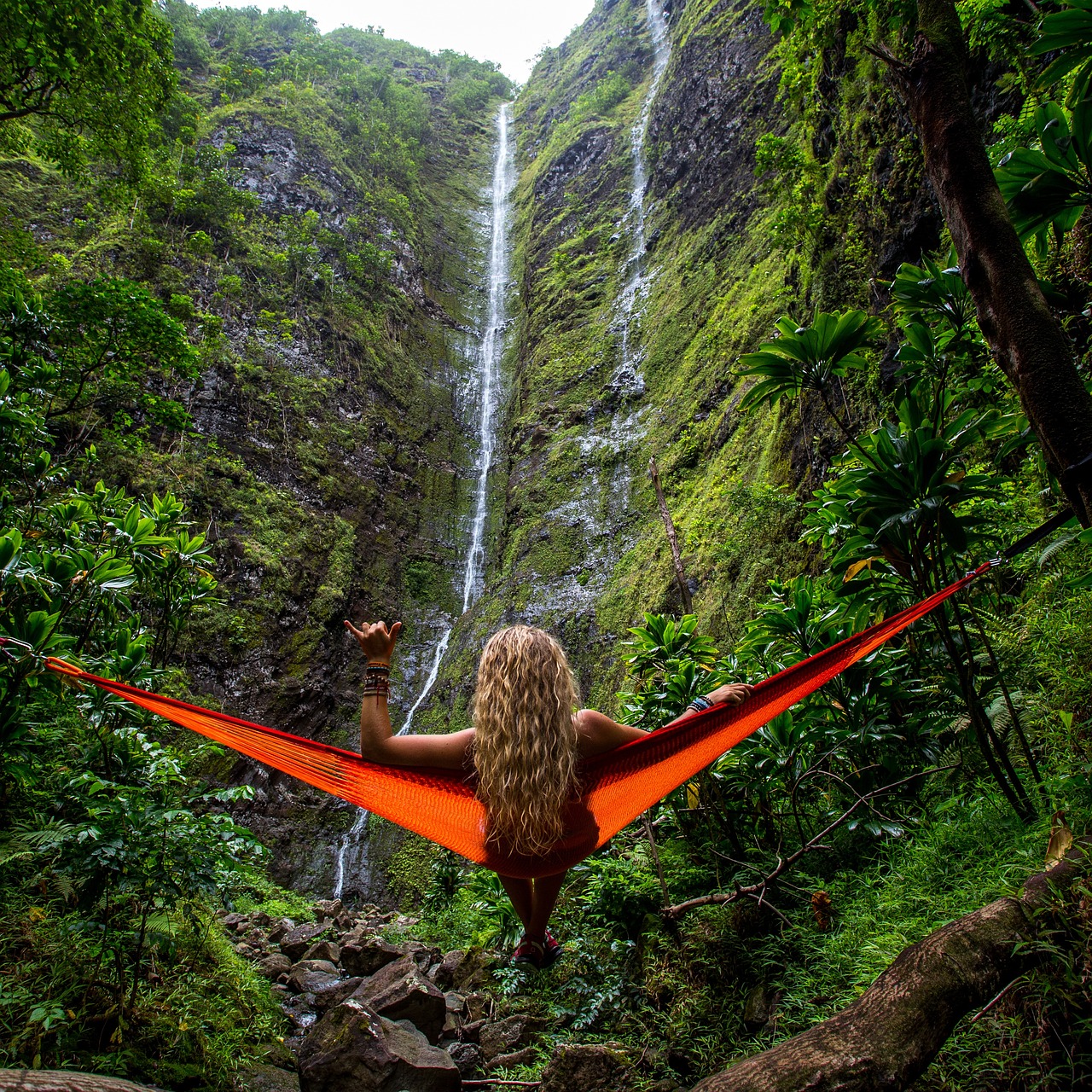
Iconic Mammals of the Amazon
The Amazon Rainforest is not just a beautiful tapestry of green; it's also a sanctuary for some of the most iconic mammals on the planet. Imagine wandering through the dense foliage, where the sounds of rustling leaves and distant calls create a symphony of life. Among these sounds, you might hear the powerful growl of a jaguar, the playful chatter of a sloth, or the gentle clicks of a river dolphin. Each of these creatures plays a crucial role in the intricate web of the rainforest ecosystem, and their survival is deeply intertwined with the health of their habitat.
The jaguar, often regarded as the king of the Amazon, is a magnificent predator that roams the forest floor. With its powerful build and striking coat marked with rosettes, the jaguar is not just a sight to behold; it is a vital part of the food chain. By preying on various species, it helps to maintain the balance of the ecosystem. However, this majestic feline faces significant threats, primarily from habitat loss due to deforestation and illegal hunting. As the forest shrinks, so does its territory, leading to increased human-wildlife conflict.
Then there’s the sloth, often considered the poster child for the slow and steady approach to life. These creatures may move at a leisurely pace, but they are fascinating in their own right. Sloths spend most of their lives hanging upside down in trees, feeding on leaves, and playing a crucial role in their ecosystem by aiding in the growth of plants through their unique digestive processes. Unfortunately, sloths are also at risk as their habitats are destroyed for agriculture and urban development. The loss of trees not only threatens their survival but also disrupts the entire ecosystem they help sustain.
Another remarkable resident of the Amazon is the Amazon river dolphin, known locally as the boto. These intelligent and social creatures navigate the complex waterways of the rainforest, showcasing the rich biodiversity of the region. River dolphins are known for their playful behavior and are often seen leaping out of the water. However, they, too, face dangers from pollution, dam construction, and fishing nets. As the rivers become more polluted and their habitats altered, the future of these gentle giants hangs in the balance.
In addition to these iconic mammals, the Amazon is home to a variety of other fascinating species, including:
- Capybaras: The world's largest rodent, often found near water bodies.
- Tapirs: Large, herbivorous mammals that play a key role in seed dispersal.
- Giant anteaters: Unique creatures that feed primarily on ants and termites.
Each of these mammals contributes to the ecological balance of the Amazon, highlighting the importance of protecting their habitats. As we delve deeper into understanding these species, it's essential to recognize the interconnectedness of life in the rainforest. The loss of even one species can have ripple effects throughout the ecosystem, impacting everything from plant life to other animal species.
In conclusion, the iconic mammals of the Amazon are not just fascinating creatures; they are vital components of a complex ecosystem that needs our protection. By understanding their roles and the threats they face, we can take meaningful steps towards conservation. After all, preserving the Amazon is not just about saving trees; it's about safeguarding the incredible diversity of life that calls this rainforest home.
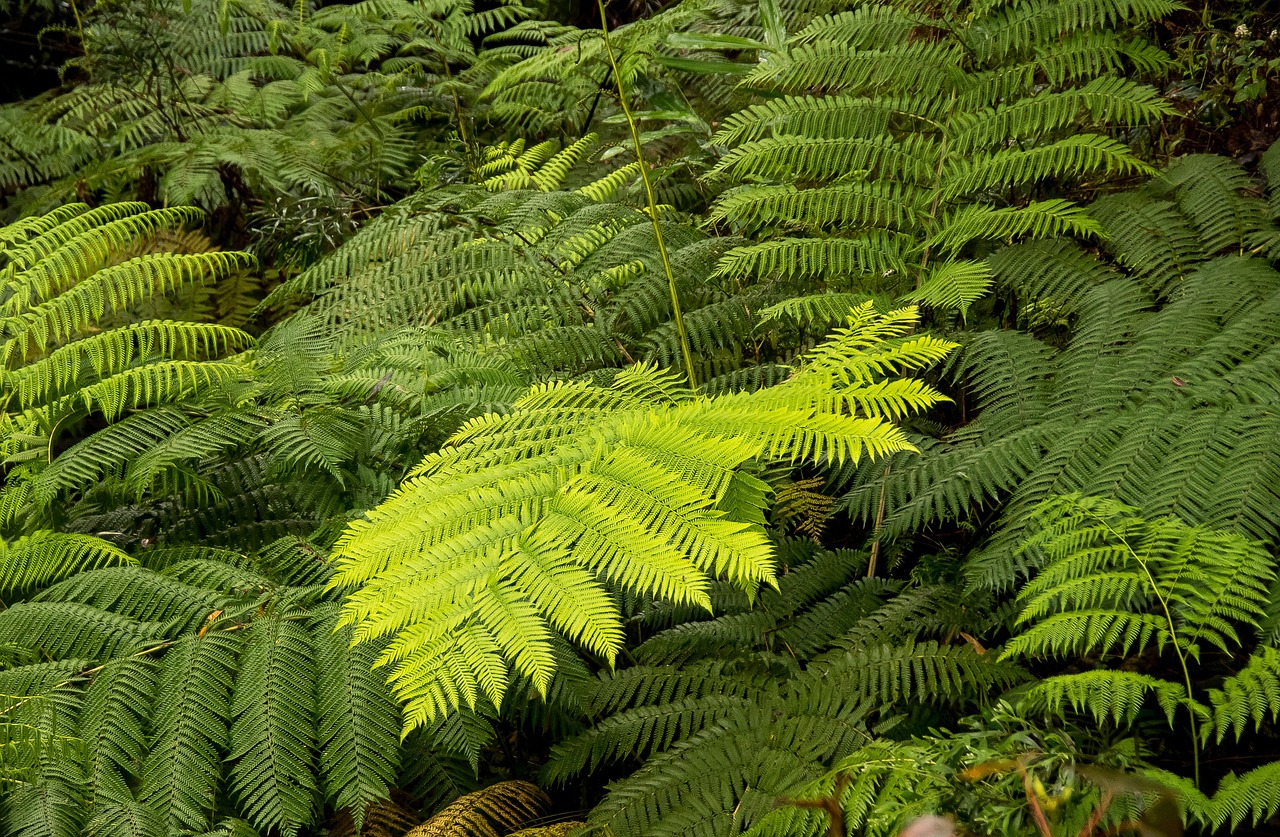
Unique Plant Life
The Amazon Rainforest is often referred to as the “lungs of the planet,” and it’s not just because of its sheer size. This magnificent ecosystem is home to an astonishing variety of plant life, with estimates suggesting that it houses over 40,000 different species of plants. These plants are not only vital for the health of the rainforest but also play a crucial role in the global ecosystem. Imagine walking through a dense, green paradise where every leaf, flower, and tree has a story to tell. From towering trees that reach for the sky to vibrant flowers that attract a myriad of pollinators, the Amazon is a treasure trove of botanical wonders.
One of the most remarkable aspects of Amazonian flora is its medicinal properties. Many plants found here have been used for centuries by indigenous peoples for their healing qualities. For instance, the cinchona tree is the source of quinine, a treatment for malaria, while the cat's claw vine is known for its anti-inflammatory properties. These plants are not only important for local communities but also hold potential for future pharmaceutical discoveries. In fact, it is estimated that over 25% of modern medicines are derived from rainforest plants, underscoring the importance of conserving this biodiversity.
Additionally, the unique adaptations of Amazonian plants allow them to thrive in a complex and competitive environment. For example, the Victoria amazonica, the world's largest water lily, can grow up to 3 meters in diameter and has leaves strong enough to support the weight of a small child. Its stunning flowers bloom at night, emitting a sweet fragrance to attract pollinators. Such adaptations not only highlight the incredible diversity of life but also the intricate relationships between species in this ecosystem.
However, the unique plant life of the Amazon is under threat. Deforestation, driven by agriculture, logging, and infrastructure development, poses a significant risk to these species. When trees are cut down, it disrupts the entire ecosystem, affecting both plant and animal life. To illustrate the impact of deforestation, consider the following table:
| Threat | Impact on Plant Life |
|---|---|
| Deforestation | Loss of habitat, reduction in biodiversity, and extinction of species |
| Climate Change | Altered growing conditions, increased vulnerability to pests and diseases |
| Illegal Logging | Destruction of native species and disruption of ecological balance |
In conclusion, the unique plant life of the Amazon Rainforest is not just a collection of beautiful flora; it is a vital component of our planet's health and well-being. The intricate web of life that these plants support is essential for maintaining ecological balance and providing resources for future generations. Protecting this biodiversity is not merely an act of conservation; it is a responsibility we share as stewards of the Earth. So, the next time you think about the Amazon, remember that it is more than just a rainforest; it is a living library of life that holds secrets to our past and keys to our future.
- What are some common plants found in the Amazon Rainforest? The Amazon is home to a variety of plants, including the rubber tree, Brazil nut tree, and various species of orchids.
- How do plants in the Amazon adapt to their environment? Many Amazonian plants have adapted to the rainforest's unique conditions through features like large leaves for maximizing sunlight capture and deep root systems for water absorption.
- Why is it important to conserve Amazonian plant life? Conserving plant life in the Amazon is crucial for maintaining biodiversity, supporting local communities, and ensuring the availability of medicinal resources.
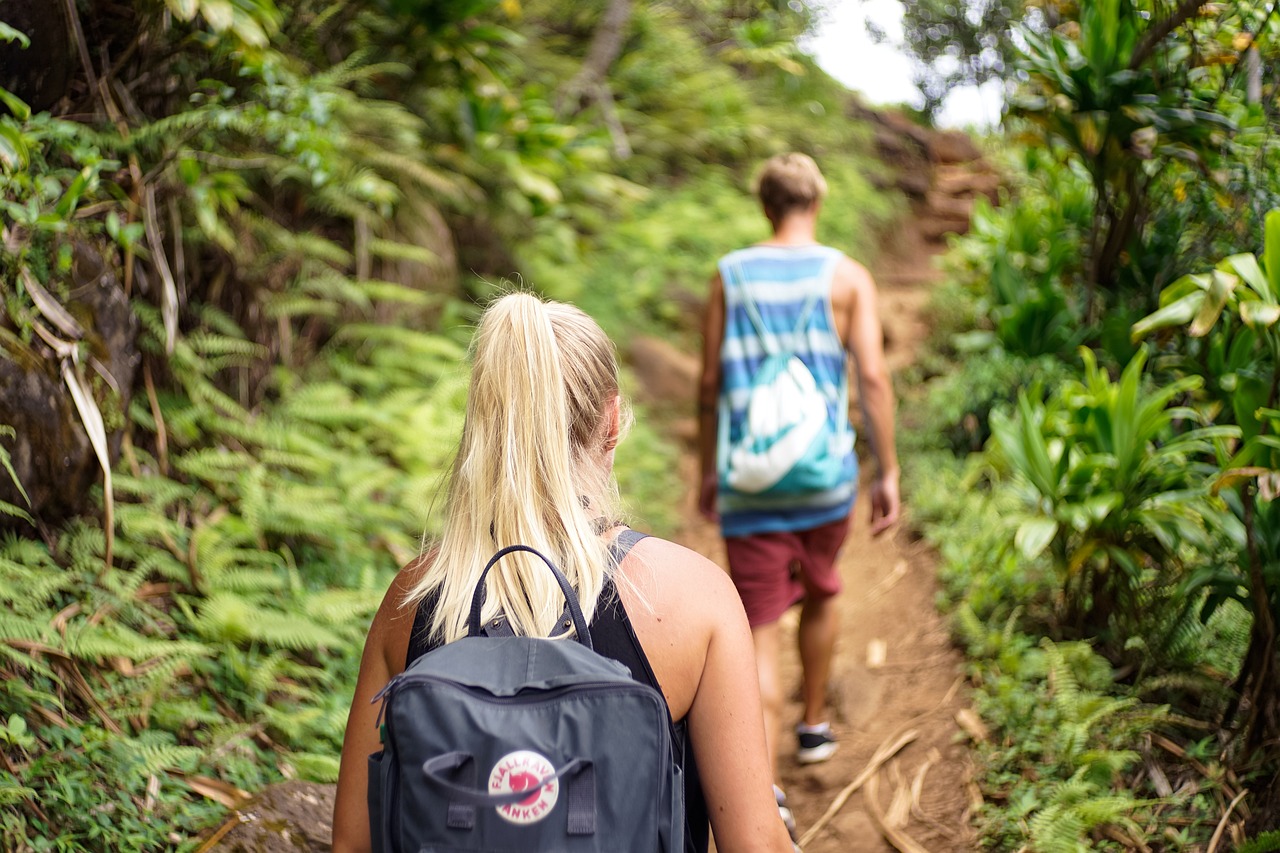
Threats to Amazonian Biodiversity
The Amazon Rainforest, often referred to as the "lungs of the Earth," is facing an alarming array of threats that jeopardize its rich biodiversity. As we delve into the heart of this ecological wonder, it becomes evident that the survival of countless species hangs in the balance. The primary culprits behind these threats include deforestation, climate change, and the illegal wildlife trade. Each of these factors not only diminishes the flora and fauna of the region but also disrupts the delicate balance of the entire ecosystem.
Deforestation is perhaps the most visible threat, with vast swathes of the rainforest being cleared for agriculture, logging, and urban development. The statistics are staggering: according to recent studies, an estimated 1.5 million hectares of forest are lost each year. This loss not only reduces habitat for countless species but also releases significant amounts of carbon dioxide into the atmosphere, exacerbating global warming.
Climate change, on the other hand, presents a more insidious threat. As temperatures rise and weather patterns shift, the Amazon faces increased instances of drought and flooding. These changes can alter the natural habitat in ways that many species may not be able to adapt to quickly enough. For example, the jaguar, a top predator in the Amazon, relies on specific habitats that are becoming increasingly fragmented due to climate-induced changes.
Moreover, the illegal wildlife trade poses a direct threat to many species. From exotic birds to rare reptiles, the demand for wildlife as pets or for traditional medicine has led to rampant poaching. The loss of these animals not only affects their populations but also disrupts the ecological roles they play. For instance, the extinction of a single species can have a ripple effect, impacting other species that rely on it for food or pollination.
In summary, the threats to Amazonian biodiversity are multifaceted and interconnected. Addressing these issues requires a concerted effort from governments, organizations, and individuals alike. We must recognize that the fate of the Amazon is intertwined with our own, and taking action is not just a responsibility but a necessity for future generations.
- What are the main threats to the Amazon Rainforest?
The main threats include deforestation, climate change, and illegal wildlife trade, all of which significantly impact biodiversity. - How does deforestation affect the Amazon's ecosystem?
Deforestation leads to habitat loss for countless species, disrupts ecological balance, and contributes to climate change by releasing stored carbon dioxide. - What role does climate change play in threatening the Amazon?
Climate change alters weather patterns, leading to droughts and floods that can devastate habitats and make survival difficult for many species. - Why is the illegal wildlife trade a concern for the Amazon?
This trade threatens species directly through poaching and indirectly by disrupting their ecological roles, which can lead to broader ecosystem imbalances.
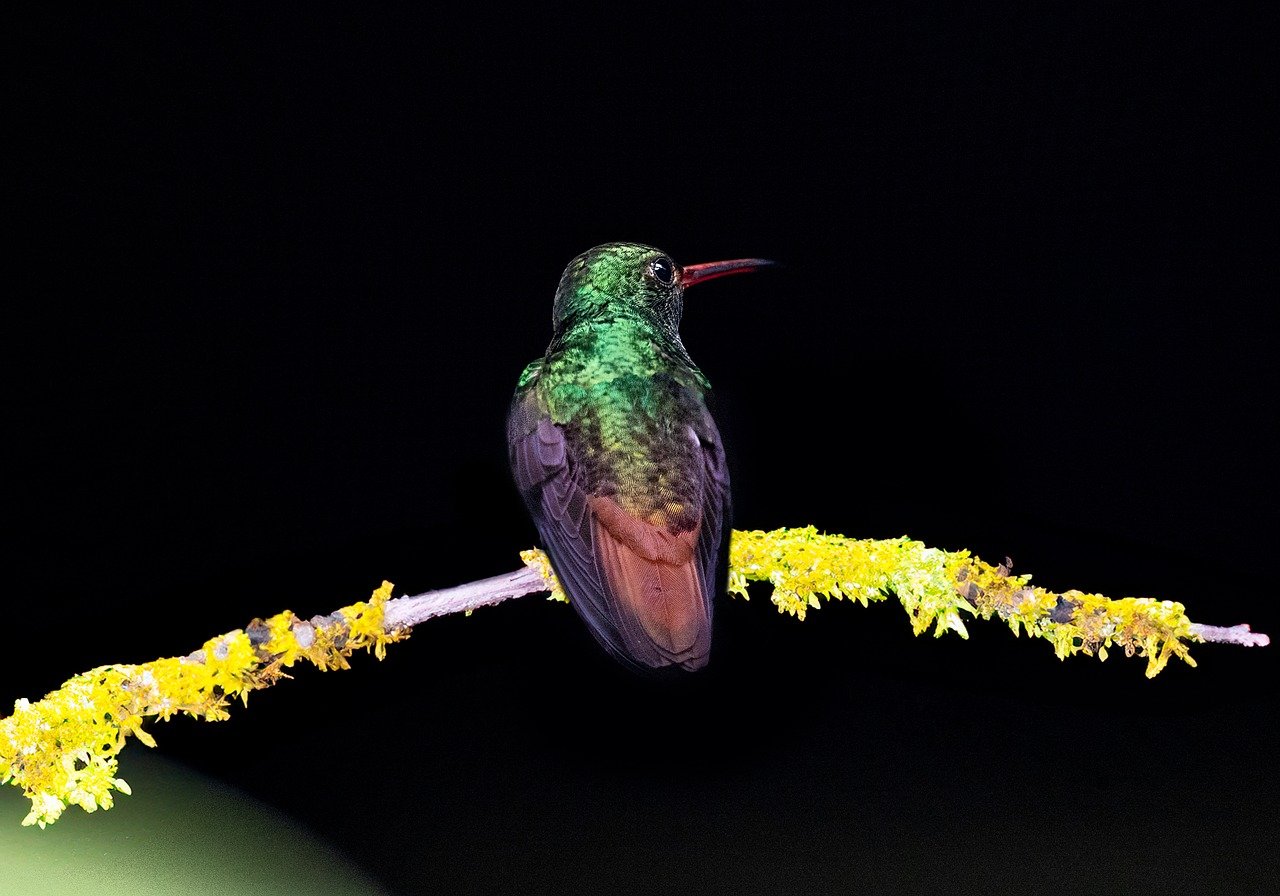
Cultural Importance of the Amazon
The Amazon Rainforest is not just a treasure trove of biodiversity; it also holds profound cultural significance for the indigenous peoples who have called it home for thousands of years. These communities are the custodians of ancient traditions, languages, and knowledge systems that are intricately linked to the forest and its resources. The rainforest provides them with everything from food and shelter to materials for clothing and tools, which are essential for their survival and cultural practices. Imagine living in a place where every tree, river, and animal has a story, a purpose, and a connection to your identity. For many indigenous groups, the Amazon is not merely a habitat; it is their very lifeblood.
At the heart of this cultural significance is the profound relationship that indigenous peoples have with the land. They possess a wealth of traditional ecological knowledge that has been passed down through generations. This knowledge encompasses sustainable practices that ensure the health of the ecosystem while meeting their community's needs. For instance, many tribes engage in selective harvesting of plants, allowing for regeneration and maintaining the delicate balance of the rainforest. This sustainable approach is essential not only for their survival but also for the health of the planet.
Furthermore, the Amazon is a spiritual landscape for these communities. Many indigenous cultures view the forest as a living entity, filled with spirits and ancestors. Rituals and ceremonies often revolve around the natural world, celebrating the cycles of life and honoring the spirits that inhabit the forest. This deep-rooted spirituality fosters a sense of responsibility to protect and conserve their environment. However, the encroachment of modern development threatens to disrupt this harmonious existence, leading to a loss of cultural identity and heritage.
As we consider the cultural importance of the Amazon, it’s crucial to recognize the challenges faced by indigenous communities today. The rapid expansion of agriculture, logging, and mining activities not only depletes the resources they depend on but also displaces them from their ancestral lands. This scenario raises an important question: How can we balance the need for development with the preservation of these unique cultures? The answer lies in inclusive conservation efforts that respect and incorporate indigenous knowledge and practices.
In light of these challenges, various organizations are working tirelessly to advocate for the rights of indigenous peoples. They aim to secure land rights, promote sustainable practices, and ensure that the voices of these communities are heard in discussions about development and conservation. By supporting these initiatives, we can help safeguard the cultural heritage of the Amazon while also promoting the conservation of its extraordinary biodiversity.
- Why is the Amazon Rainforest culturally important? The Amazon is vital for indigenous peoples as it provides resources for their livelihoods, is central to their spiritual practices, and is intertwined with their cultural identity.
- How do indigenous peoples contribute to conservation? They possess extensive knowledge of sustainable practices that have been developed over centuries, which can be crucial for maintaining the health of the rainforest.
- What are the threats to indigenous cultures in the Amazon? Modern development, such as agriculture and mining, threatens their land, resources, and cultural identity.
- How can we support indigenous communities in the Amazon? We can support their rights and initiatives by advocating for their land rights, promoting sustainable practices, and ensuring their voices are included in conservation efforts.
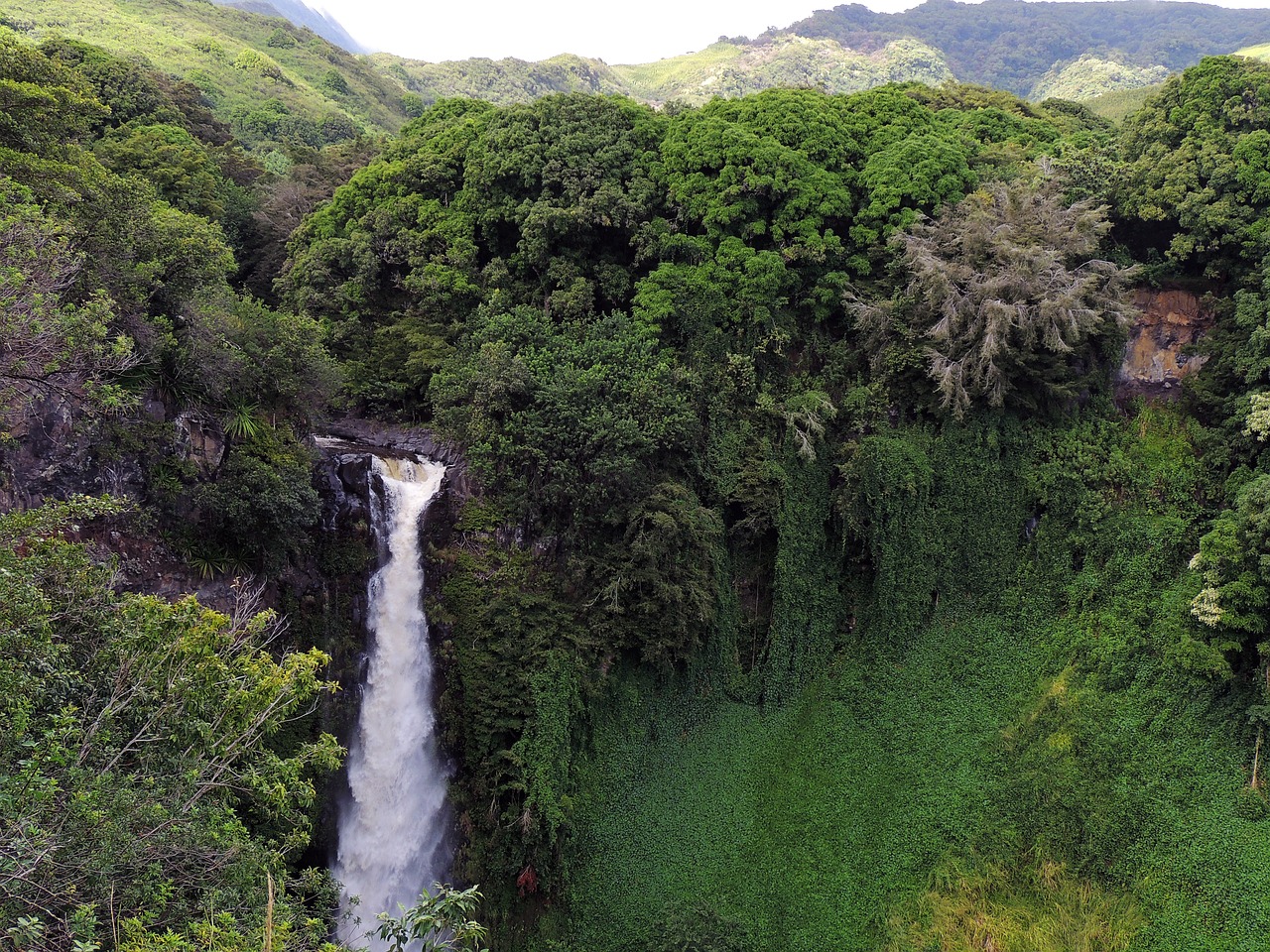
Indigenous Peoples and Their Knowledge
The Indigenous peoples of the Amazon Rainforest are the true guardians of this vibrant ecosystem, having lived in harmony with nature for thousands of years. Their deep understanding of the rainforest is not just a product of survival; it is a treasure trove of knowledge passed down through generations. Imagine having a map of the forest etched in your mind, where every tree, river, and animal holds a story and a purpose. This is the reality for many Indigenous communities, who view the rainforest not merely as a resource but as a living entity that sustains them both physically and spiritually.
These communities possess invaluable insights into the flora and fauna of the Amazon, understanding which plants can heal ailments, which animals are vital for ecological balance, and how to cultivate the land sustainably without depleting its resources. For instance, they have developed intricate systems of agroforestry that promote biodiversity and soil health, demonstrating a profound respect for the environment. This knowledge is not just practical; it is woven into their cultural practices, rituals, and social structures, making it essential for their identity.
However, the wisdom of Indigenous peoples is under threat from external pressures such as logging, mining, and agricultural expansion. As these industries encroach on their lands, they not only jeopardize their way of life but also the intricate balance of the rainforest itself. When Indigenous peoples are displaced, we lose not just their cultural heritage but also centuries of ecological knowledge that could help us combat climate change and preserve biodiversity.
To illustrate the importance of Indigenous knowledge, consider the following table that showcases some traditional practices and their ecological benefits:
| Traditional Practice | Ecological Benefit |
|---|---|
| Shifting Cultivation | Promotes soil fertility and reduces deforestation |
| Medicinal Plant Use | Preserves biodiversity and aids in pharmaceutical discoveries |
| Wildlife Conservation Rituals | Helps maintain population balance and protect endangered species |
Moreover, Indigenous peoples are increasingly recognized as key players in conservation efforts. Their traditional ecological knowledge (TEK) is being integrated into modern conservation strategies, providing a holistic approach that combines scientific research with ancestral wisdom. This collaboration not only empowers Indigenous communities but also enhances the effectiveness of conservation initiatives. By valuing and incorporating their knowledge, we can create a more sustainable future for the Amazon and its inhabitants.
In summary, the knowledge of Indigenous peoples is a vital resource in the fight to protect the Amazon Rainforest. Their relationship with the land is a testament to the power of sustainable living and ecological stewardship. As we face unprecedented environmental challenges, it is imperative that we listen to and learn from these custodians of the forest. After all, preserving the Amazon is not just about saving trees; it’s about honoring the rich tapestry of life that has thrived there for millennia.
- What role do Indigenous peoples play in Amazon conservation? Indigenous peoples are crucial for conservation as they possess extensive knowledge of the ecosystem and sustainable practices.
- How does traditional ecological knowledge benefit modern conservation efforts? Traditional ecological knowledge (TEK) provides insights that can enhance the effectiveness of conservation strategies by integrating cultural practices with scientific research.
- What are some threats to Indigenous communities in the Amazon? Indigenous communities face threats from deforestation, mining, and agricultural expansion, which jeopardize their lands and way of life.
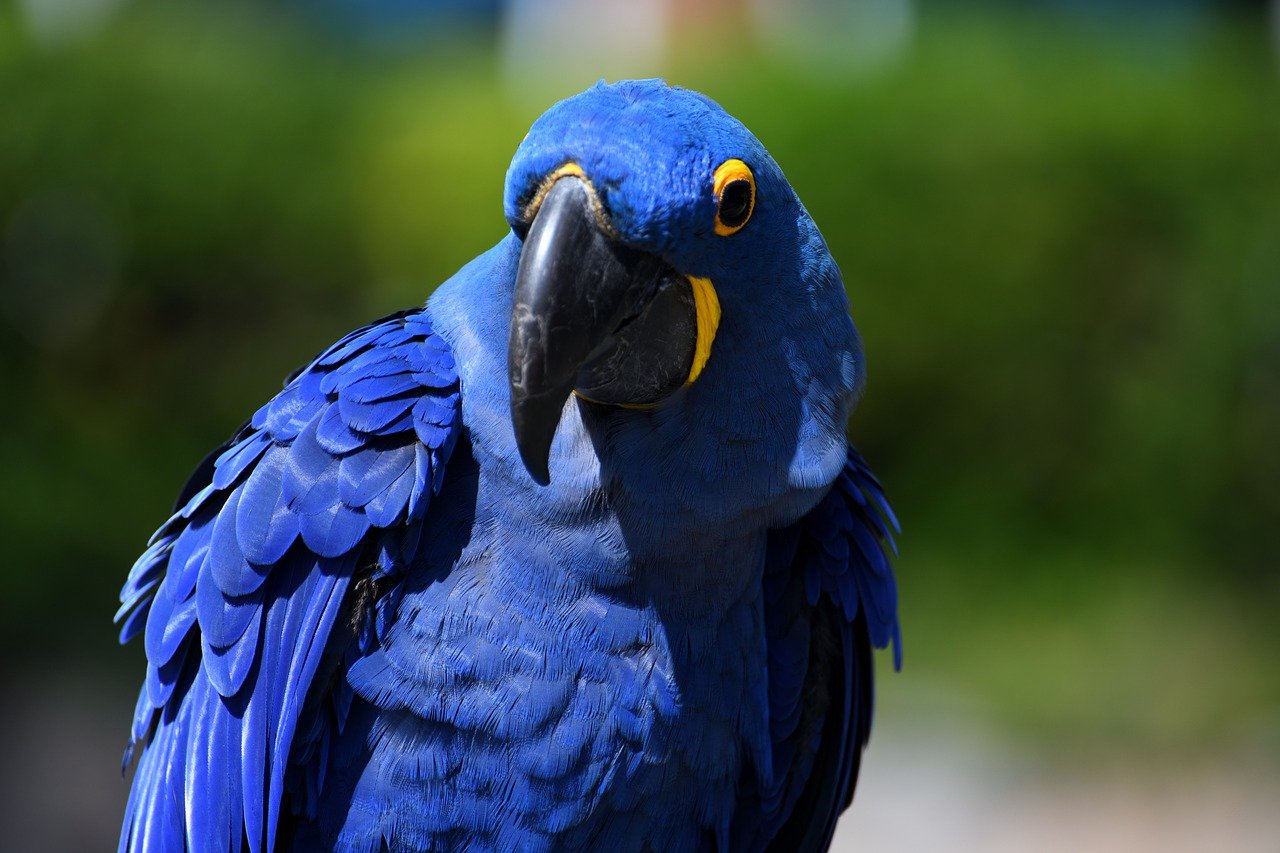
Impact of Modern Development
The Amazon Rainforest, often referred to as the "lungs of the Earth," is facing unprecedented challenges due to modern development. As the world continues to expand, the push for agricultural land, urbanization, and infrastructure projects has led to significant encroachments into this vital ecosystem. It's like watching a beautiful painting being slowly erased, stroke by stroke, as we prioritize short-term gains over long-term sustainability. The consequences of these actions are profound, not just for the rainforest itself but for the entire planet.
One of the most alarming impacts of modern development is deforestation. Large swathes of forest are cleared to make way for cattle ranching, soy production, and logging. According to recent statistics, approximately 17% of the Amazon has been deforested in the last 50 years, and this number continues to rise. Each tree that falls is not just a loss of wood; it's a loss of habitat for countless species, a reduction in carbon sequestration, and a step towards climate change. The Amazon acts as a carbon sink, absorbing carbon dioxide from the atmosphere, and its destruction contributes significantly to global warming.
Moreover, the construction of roads and highways opens up previously inaccessible areas, leading to an influx of settlers and industries. This not only accelerates deforestation but also increases the risk of illegal activities such as poaching and illegal logging. The once tranquil habitats become battlegrounds for survival as wildlife faces the dual threats of habitat loss and human encroachment. It's a vicious cycle that threatens to tip the delicate balance of this ecosystem.
Another critical aspect of modern development is the impact on indigenous communities. These groups have lived in harmony with the rainforest for centuries, relying on its resources for their livelihoods. However, as development projects encroach upon their lands, their way of life is threatened. The loss of biodiversity directly affects their food sources, medicine, and cultural practices. It's a heartbreaking scenario where the very fabric of their existence is being torn apart by forces beyond their control.
To illustrate the extent of the impact, consider the following table that highlights some of the key consequences of modern development in the Amazon:
| Impact | Description |
|---|---|
| Deforestation | Loss of trees leading to habitat destruction and increased carbon emissions. |
| Loss of Biodiversity | Extinction of species and disruption of ecological balance. |
| Displacement of Indigenous Peoples | Threat to traditional lifestyles and cultural heritage. |
| Climate Change | Increased greenhouse gas emissions contributing to global warming. |
In conclusion, the impact of modern development on the Amazon Rainforest is a complex issue that intertwines environmental, social, and economic factors. It prompts us to ask ourselves: at what cost are we pursuing progress? The challenge lies in finding a balance between development and conservation. Sustainable practices must be prioritized to ensure that this irreplaceable ecosystem can continue to thrive, benefiting not only the indigenous peoples who call it home but also the global community that relies on its resources.
- What is the main cause of deforestation in the Amazon? The primary drivers include agriculture, logging, and infrastructure development.
- How does deforestation affect climate change? Deforestation releases stored carbon dioxide, contributing to global warming.
- What can be done to protect the Amazon Rainforest? Sustainable practices, reforestation, and legal protections are crucial for conservation efforts.
- Why is the Amazon important for indigenous communities? The rainforest provides essential resources for their livelihoods, culture, and spirituality.
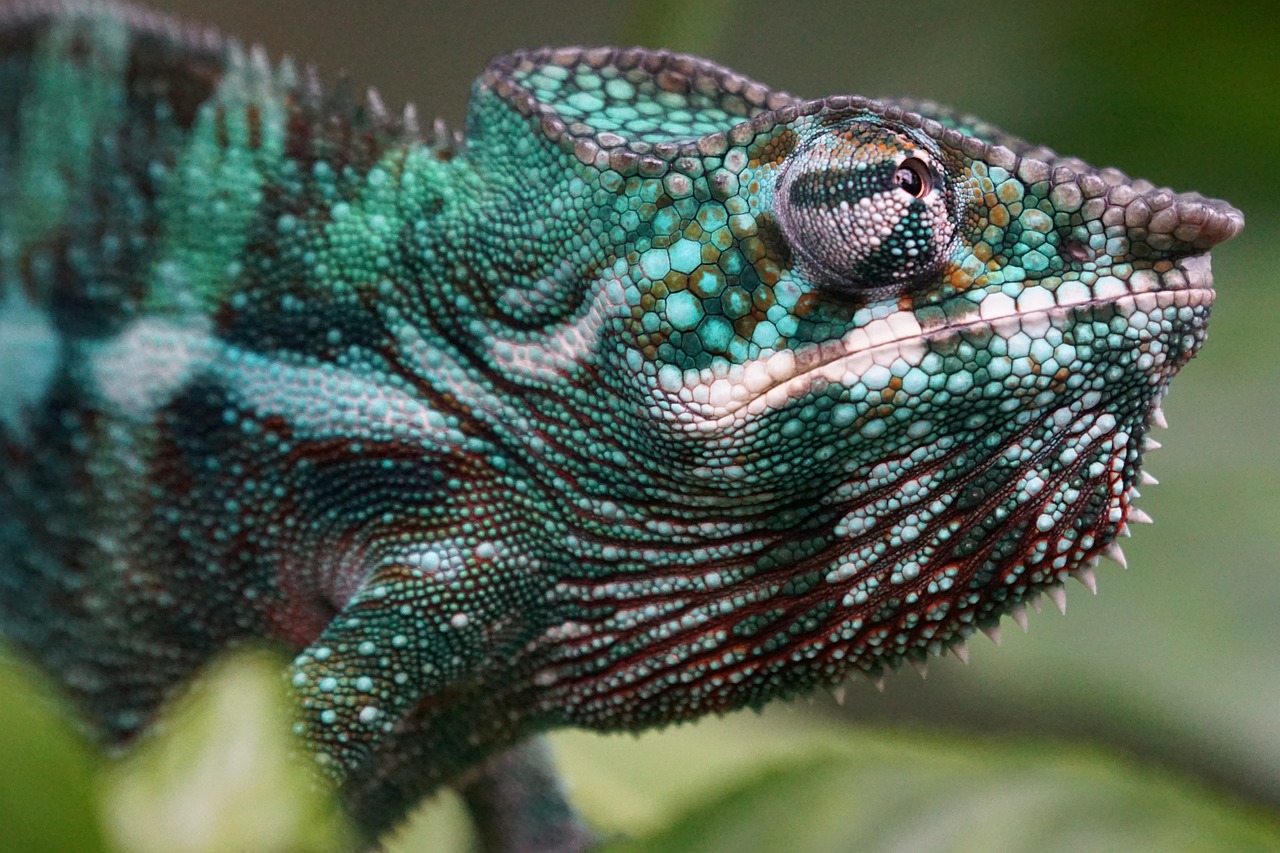
Conservation Efforts and Initiatives
The Amazon Rainforest is not just a natural wonder; it's a vital component of our planet's health, and its conservation is essential for maintaining global biodiversity. Fortunately, various organizations, governments, and local communities are joining forces to protect this precious ecosystem. These conservation efforts are multifaceted, targeting everything from reforestation to sustainable development practices. By understanding and supporting these initiatives, we can all play a part in safeguarding the Amazon for future generations.
One of the most significant conservation strategies involves creating protected areas and national parks. These designated zones help to preserve the unique flora and fauna of the Amazon while providing a safe haven from deforestation and exploitation. For instance, the Jau National Park in Brazil spans over 2.3 million hectares and is home to countless species, including endangered ones. Such parks not only protect wildlife but also promote ecotourism, which can be a sustainable source of income for local communities.
Additionally, organizations like the World Wildlife Fund (WWF) and Rainforest Alliance are actively working to educate both local populations and the global community about the importance of the Amazon. They conduct research, run campaigns, and create partnerships aimed at fostering sustainable practices. For example, the WWF has initiated projects that empower indigenous communities to manage their resources sustainably, ensuring that their traditional knowledge is respected and utilized.
Another crucial aspect of conservation is combating illegal activities such as poaching and logging. Governments in the Amazon basin are ramping up enforcement of environmental laws, which is vital for protecting endangered species. In addition, international cooperation is essential. Countries are beginning to share resources and strategies to tackle these threats collectively. For instance, the Amazon Cooperation Treaty Organization (ACTO) facilitates collaboration among Amazonian countries to promote sustainable development and environmental protection.
Moreover, reforestation initiatives are gaining momentum. These projects aim to restore areas that have been degraded by human activity. For example, the Amazon Fund has been instrumental in financing projects that restore degraded lands and promote sustainable land use. Through these efforts, not only is biodiversity preserved, but carbon dioxide is absorbed, helping to mitigate climate change.
Ultimately, the success of these conservation efforts hinges on global awareness and participation. Individuals can contribute by supporting organizations that focus on Amazon conservation, spreading the word about the importance of this ecosystem, and even making lifestyle changes that reduce their carbon footprint. Every small action counts.
In conclusion, while the challenges facing the Amazon Rainforest are daunting, the ongoing conservation efforts and initiatives provide a glimmer of hope. By working together—governments, organizations, and individuals alike—we can ensure that this ecological treasure continues to thrive for generations to come.
- What are the main threats to the Amazon Rainforest? The primary threats include deforestation, climate change, illegal wildlife trade, and industrial development.
- How can individuals contribute to Amazon conservation? Individuals can support conservation organizations, raise awareness about the importance of the Amazon, and adopt sustainable practices in their daily lives.
- What role do indigenous communities play in conservation? Indigenous communities possess invaluable knowledge about the Amazon's ecosystems and often lead sustainable practices that help protect the rainforest.
- Are there successful conservation projects in the Amazon? Yes, various projects focus on reforestation, creating protected areas, and promoting sustainable development, which have shown positive results.
Frequently Asked Questions
- What makes the Amazon Rainforest so important for the planet?
The Amazon Rainforest is often referred to as the "lungs of the Earth" because it produces a significant amount of the world's oxygen and acts as a crucial carbon sink. Its vast ecosystems help regulate the global climate, influence weather patterns, and maintain biodiversity, making it essential for ecological balance.
- How many species are found in the Amazon Rainforest?
The Amazon is home to an astonishing variety of life, with estimates suggesting that it harbors approximately 390 billion individual trees and around 16,000 species of trees alone. Additionally, millions of other species, including countless insects, birds, mammals, and reptiles, call this rich ecosystem home.
- Why are endemic species in the Amazon so important?
Endemic species are unique to the Amazon and cannot be found anywhere else on Earth. Their preservation is vital not only for maintaining biodiversity but also for the potential benefits they may offer, such as medicinal properties and ecological services that contribute to the health of the planet.
- What threats does the Amazon Rainforest face today?
The Amazon is under severe threat from activities like deforestation, illegal logging, climate change, and the wildlife trade. These activities not only endanger the diverse species that inhabit the rainforest but also disrupt the delicate balance of the ecosystems that sustain them.
- How do indigenous peoples contribute to the conservation of the Amazon?
Indigenous communities possess profound knowledge about the Amazon's ecosystems and have lived sustainably within its bounds for centuries. Their traditional practices and understanding of the land play a crucial role in conservation efforts, helping to maintain biodiversity and protect the rainforest from external threats.
- What are some successful conservation initiatives in the Amazon?
Various organizations and governments are making strides in protecting the Amazon. Initiatives include establishing protected areas, promoting sustainable land use practices, and collaborating with indigenous communities to ensure their voices are heard in conservation strategies. Global cooperation is key to these efforts.
- How can individuals help protect the Amazon Rainforest?
Individuals can contribute to the protection of the Amazon by supporting sustainable products, raising awareness about the issues facing the rainforest, and donating to reputable conservation organizations. Every small action counts, whether it's reducing paper use or advocating for policies that protect natural habitats.



















